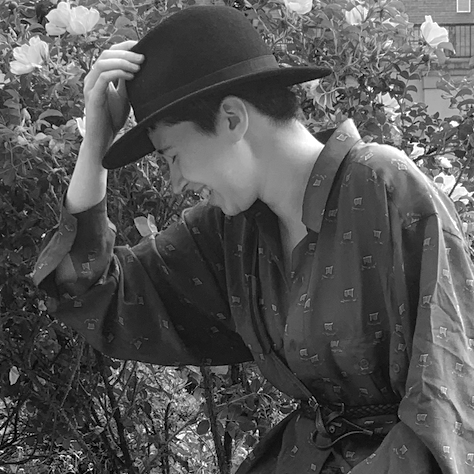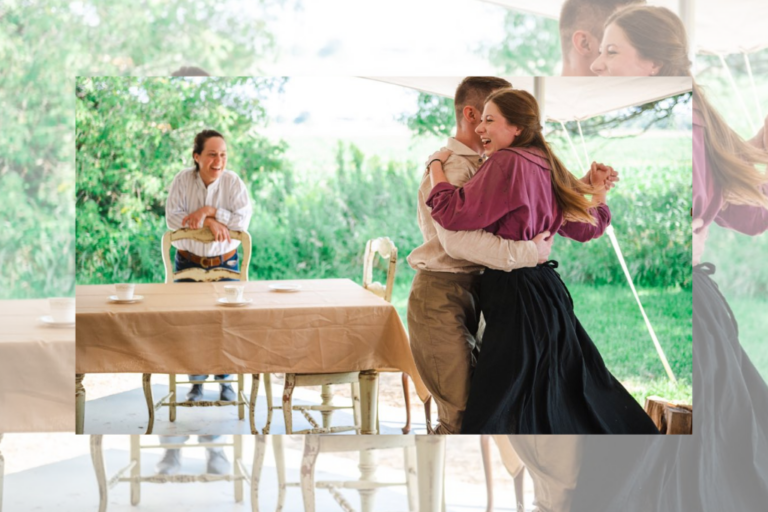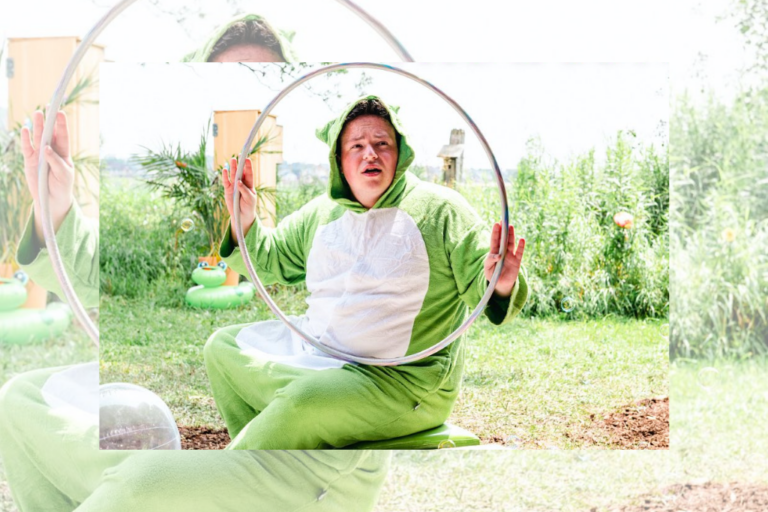REVIEW: A Wrinkle in Time at the Stratford Festival
Sometimes a dark and stormy night makes for an auspicious beginning. Much like the beloved Madeleine L’Engle novel from which it’s adapted, the Stratford Festival’s world premiere production of Thomas Morgan Jones’ theatricalization of A Wrinkle in Time opens with a hurricane, a literal windstorm which prepares audiences and characters alike for the ensuing whirlwind adventure through space and time.
While some audiences may already be familiar with the story, either from L’Engle’s novel or one of its film adaptations, Jones’ (somewhat abridged) version makes the plot accessible to longtime fans and newcomers alike. Over the course of a snappy 95 minutes (intermission included), it hits the high notes of L’Engle’s story, following the mathematically-inclined Meg Murry (Celeste Catena) and her subtly supernatural younger brother Charles Wallace (Noah Beemer) as they, accompanied by Meg’s conventionally popular classmate Calvin O’Keefe (Robert Markus), set out on an interplanetary quest to find and rescue the Murry family’s missing father (Jamie Mac). As their journey sees them hop between planets, from the picturesque Uriel to the dystopian Camazotz, these intrepid (if occasionally apprehensive) heroes learn the importance of caring for each other while also recognizing their own individual potential.
The production’s opening scenes introduce the audience not only to the play’s premise, but also to some of the visual and auditory tricks they can expect to experience throughout the show. The aforementioned hurricane (evoked through a combination of lighting, projection, and a realistic soundscape) sets an appropriately tense mood, and the first appearances of the enigmatic Mrs.Whatsit, Mrs. Who, and Mrs. Which as projected glowing orbs which speak via voiceover build anticipation for their eventual in-person appearances on stage. Especially considering the play is geared towards some of the Festival’s youngest audience members, it’s an effective, attention-grabbing, and curiosity-building start.
While an opening set on Earth grounds the story and allows the audience to meet its characters on familiar terms, it’s when the story takes a turn for the extraterrestrial that the production really shines. Characters and audience members alike are guided through the complexities of interdimensional travel by “The Mrs.’,” who each bring a unique spin to the role of ethereal advisor. Nestor Lozano Jr.’s Mrs. Whatsit is kind and vibrant, while Khadijah Roberts-Abdullah’s Mrs. Who’s knack for speaking only in quotations is likely to evoke knowing chuckles from some of the older audience members, and Kim Horsman’s Mrs. Which carries a sense of wisdom and gravitas.
The production’s minimalistic set (designed by Teresa Przybylski) features only two vertical screens and the occasional piece of metal frame furniture. However, this backdrop, combined with on-screen projections (created by designer jaymez), and the work of lighting designer Kimberly Purtell, effectively set the tone for each of the play’s many alien locations. The minimalism of the stage also makes costume designer Robin Fisher’s work pop: from the glittering gowns and intricate wigs of Mrs. Who, Whatsit, and Which, to the jester-like Happy Medium (Erica Peck), Fisher plays with shape, colour, movement, and structure in ways which create contrast between our earthling heroes and their otherworldly counterparts.
The production’s creatures are also well worth a mention — from the terrifying Man with Red Eyes (with movement by Christine Desjardins and voice by Jamie Mac), to the gentle giant Aunt Beast (with movement by Jahlen Barnes, Germaine Konji, and Erica Peck, and voice by Beck Lloyd), their designs are imaginative, evocative, and just plain cool to look at. (And as a bit of a sci-fi geek myself, it was fun to spot elements of the costume and creature design which seemed to be subtle nods to other classic genre staples.)
The entire production is also heightened by Deanna H. Choi’s sound design and scoring. From the realistic opening thunderstorm and other meticulously well-timed sound effects, to seamlessly integrated voiceovers, to atmospheric sci-fi synths and cinematic underscoring of the play’s climactic scene, Choi’s work adds both atmosphere and heart.
In his director’s notes, Thomas Morgan Jones discusses what it means to create theatre for young people, noting the importance of honouring their “emotional capacity, their intellectual capacity, their artistic capacity, and their capacity to understand and process story.”
“Young people deserve the most sophisticated theatre that we theatre artists can offer,” he writes. And indeed, this is a production which doesn’t pull any narrative or visual punches, trusting its audience members (no matter their age) to follow the nuances of the story, and presenting images which feel sharp and sophisticated. Of course, there are still elements of the story left unexplained (who — or what — are Mrs. Who, Whatsit, and Which, exactly? And where do Charles Wallace’s preternatural skills come from?), but, as in L’Engle’s novel, part of the story’s intrigue comes from the curiosity of not quite knowing.
Jones’ adaptation walks a fine line between condensing the novel’s plot and leaving its spirit intact. Fitting the story into a 75-minute timeframe means some characters lose depth or find themselves in relationships slightly shifted from those of their book counterparts, and, compared to readers, new audience members leave not knowing quite as much about the fantastical places they’ve visited. That said, the core of L’Engle’s story is still there. It’s still a tale about science and magic and family and love, and Meg’s journey of recognizing her own potential and individuality — even when they may be overshadowed by others — is one which will still resonate with audiences.
Jones’ work also shows a clear appreciation and care for its source material — lots of L’Engle’s writing is built into Jones’ script, and, notably, some of the lines which received the biggest reaction from the opening day audience were lifted verbatim from the book.
Overall, A Wrinkle in Time is an imaginative, heartfelt adaptation, which recognizes (and takes advantage of) the potential of theatre to create a visual spectacle while maintaining the emotional and thematic centre of L’Engle’s story. And if folks leave the theatre hungry for more, then there’s all the more reason to pick up the book.
A Wrinkle in Time runs at the Stratford Festival through October 29. Tickets are available here.
Intermission reviews are independent and unrelated to Intermission’s partnered content. Learn more about Intermission’s partnership model here.















Comments